Month 7:21, Week 3:6 (Sheshi/Kippur), Year:Day 5945:198 AM
2Exodus 8/40
Gregorian Calendar: Monday 27 September 2021
Sukkot 2021 VII
Zion & the Elohim Narrative II
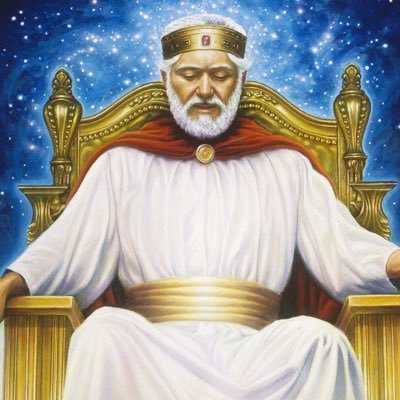
Continued from Part 1
Introduction
Chag sameach, welcome back to the final day of Sukkot, the Feast of Tabernacles. I had hoped to bring you messages on Days #2-6 but I'm afraid I was too ill. Today is not a sabbath or an official convocation so this assembly is by way of invitation to complete the message I began on Day #1 and to end seventh annual festival.
The Canal Journey
Last time we looked at the biblical narrative of life in which, and by which, we are called to live ourselves. This involves a mindset and a lifestyle. We pass down this divinely-chizzled road, bounded on either side by safety nets and secure walls, much like a barge sailing down a man-made canal. The way is strait and narrow. And though life may, and usually does, throw unexpected things at us, the canal or way is without ambiguity. Yahweh has laid out His lifestyle for us in detail in the Torah and has shown us how to live it by the examples of righteous nevi'im (prophets), kings, apostles and the supreme example of all - Yah'shua the Messiah (Jesus Christ). There are the other 'barges' ahead of us whom we follow, and those who follow us, and then there's the all-important current that lies beneath us which is the Ruach haQodesh (Holy Spirit). Like the gate we must eventually pass through to enter our heavenly home, the passage to it is narrow so we must navigate in a straight line - Yahweh's morals and ethics do not change. Only the countryside on either side of the canal changes with its rich tapesty of colours, shapes, buildings, events and people. This Kingdom Way may be defined by one word: CONSTANCY - constancy in ahavah (love), constancy on faithfulness, constancy in morality, and so on.
 We must pass down the canal of life bounded on either side by Torah
We must pass down the canal of life bounded on either side by Torah
Defining the Elohim of Israel
Last time we defined the word 'God' (or 'Elohim' in the Hebrew), understood the message of the Tanakh (Old Testament) to essenially consist of:
- (a) Monotheism-and-Creation; and
- (b) Election-and-Covenant.
We also understood the ground of our faith to be historical rather than philosophical speculation. We further understood that the three ways in which our Elohim (God) is present in our lives as individuals and collectively as a kehilah or messianic nation is:
- (a) through the divine Presence or Shekinah;
- (b) the Torah (Law, Doctrine) that shapes our lifestyle; and
- (c) the Ruach (Spirit).
The Narrative of Messianic Living
All of this is set within a Story in which we recount every year in the annual festivals, an Exodus Narrative, which teaches us how we are to escape slavery in the flesh and find peace and joy in the Promised Land of the Ruach (Spirit) through Yah'shua the Messiah (Jesus Christ). The 7+1 festivals chart or map this process for us so that we can determine where we are spiritually. Thus the Gospel life is transformed from being a haphazzard affair into a precise and accurate map. Thus spirit and physical life are integrated into one whole way of being. Additionally, it is an historical journey in time and space that ends finally with Elohim's (God's) victory over evil, and that is some which must of necessity take time because man's free agency is involved. If man didn't have freewill, none of this journey would be necessary, or could be incredible short. The reasons things seem to drag on is only because of man's freedom to choose and to thus both impact himself and those around him.
The Tsiyon Motif
Today I want to start by introducing you to a very powerful motif in Scripture called Tsiyon or Zion, not at all to be confused with the modern-day atheistic, socialistic, political ideology called 'Zionism', although it was adopted by religious Jews and Christians in the 10th century. Zion is a a term that describes, on one level, either the city of Jerusalem or the whole nation of Israel of which it was the capital (that's the Tanakh/Old Testament picture), or - on the other level - it is a description of the state of mind and heart of those whose consciousness is Kingdom-minded.
'Zion' is a Second Temple Concept
The biblical idea of Tsiyon (Zion) comes from the Second Temple period. It may be viewed in two parts:
- 1. The expectation of the return of Yahweh to Tsiyon (Zion) after His abandonment of Jerusalem at the time of the exile; and
- 2. Out of this a tradition emerged of the Enthronement of Yahweh and of One (a 'Lesser Yahweh') who somehow shared that Throne with Him (the 'Greater Yahweh').
The Temple That Might Have Been
The theme of Yahweh's return to Tsiyon (Zion) dominates the exilic and postexilic Tanakh (Old Testament) books. At times it seems as if the nevi'im (prophets) speak of nothing else, book after book. But that's because it's important. It is central to the Book of Isaiah and particularly chapters 40-55. It's in these chapters that the idea of a 'Kingdom of Elohim (God)' - or 'Kingdom of Heaven' - takes on flesh-and-bones. The navi (prophet) Ezekiel, he who declared most emphatically that Yahweh had abandoned His people to their fate caused by sin and rebellion, envisages our Heavenly Father returning to the newly built eschatological Temple. And so He might have, had the the dispersed tribes in Assyria and Babylon repented. But they would not. And so whilst the Third Tample was never built, because Israel refused to abide the terms of that prophecy - and now never will be built by Yahweh's Covenant People (and anyone who tries to build it in our day may therefore be known to be false counterfeit), nevertheless that never-now-to-be-built Temple would have been, and still is, a spiritual blueprint of the Messianic Kingdom of our Elohim (God).
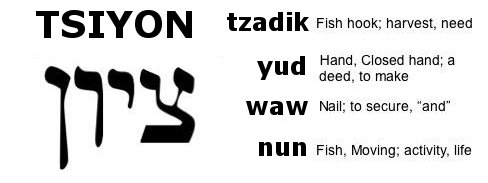
The Prophets on the Temple
The much-bveloved Psalms repeatedly celebrate the return of Yahweh to judge the world at Yom haKippurim (Yom Kippur, Day of Atonements). Haggai, who was faced with the puzzling second Temple that failed to live up to expectations, envisages Yahweh returning in a yet more glorious House. Zechariah employs exodus-imagery - the pillar of cloud and fire - to express the way in which Yahweh will return to dwell with and defend His people, and goes on to offer an apocalyptic scenario in which Yahweh will come with all His qodesh (holy, set-apart) ones (saints) to become King of all the earth, reigning from Jerusalem. Isaiah uses the same pillar of cloud and fire imagery, telling us that when this returns, the honourable of Israel - the princes and rulers, those who have a Shem Tov or Good Name will have multiple wives again, as in days of old (Is.4:1). Malachi promises that Yahweh, whom Israel seeks, will suddenly come to His Temple, even though His coming will bring judgment as well as salvation. This is the theme of the autumn (fall) festivals that we have been talking about these last weeks beginning at Yom Teruah (Day of Trumpets, Shouting).
What Happened to the Pillar of Cloud and Fire?
So that is what the nevi'im (prophets) say about these things. But - and this is important - the geographical return from exile, when it came about under Cyrus and his successors, was not accompanied by any manifestations like those of the First Exodus as recorded in Exodus 40, Leviticus 9, 1 Kings 8 or even Isaiah 6. Neither did the pillar of clouds and fire appear in the mid 1940's when Israel was supposedly restored as a nation to the Holy Land again with the creation of the Israeli Republic so neither of these, scripturally-speaking, can refer to a bona fide Return from Exile in the permanent sense. Those returning from the Exile in Babylon were eventually expelled by the Romans and Jerusalem leveled to the ground. So note this, and note this well, given that the Scriptures absolutely speak of another Pillar-of-Cloud-and-Fire Exodus happening in the future: Never do we hear that the pillar of cloud and fire that accompanied the Israelites in the wilderness of the First Exodus has led the people back from their exile.
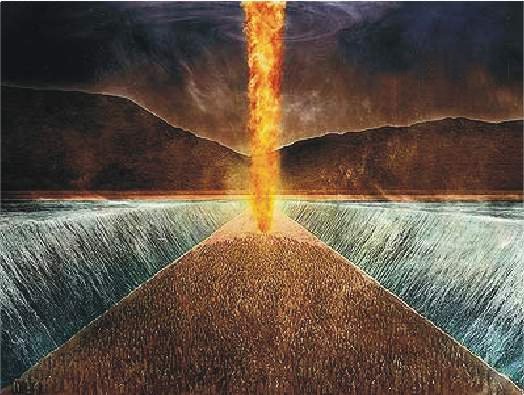
Falsified History & the True Origins of Hanukkah and Purim
At no point is the House again filled with the cloud veiling the Father's glory. At no point is the rebuilt Temple of Zerubabel ' the Second Temple or the one modified by Herod - universally hailed as the true restored shrine spoken of by Ezekiel. No new festival was given by revelation to mark the start of a great new era even though the Pharisees certainly invented two of their own - Hanukkah and Purim - that celebrated falsified history (there never was any multiplation of oil, and the Queen Esther story is a fiction). Indeed, these two unauthorised winter festivals were neither mentioned in the Torah nor are they certified by any authentic navi (prophet), introduced into the altered Yahweh-worship of Judaism an alien spirit which undiscerning Christians and Messianics have swallowed uncritically and idolatrously lock, stock, and barrel. No trace of the Book of Esther was found in the earliest known Tanakh (Old Testament) that we have, in the Dead Sea Scrolls collection, even though by the time this collection was made the alleged Book Esther events were supposed to have happened - see Purim: False Paradigms and Looking Ahead, Our Last Hanukkah: The Gospel vs. The Sword, and Origin of the Canon: The Tanakh (Old Testament).
The Temple, Victory and Kingship Markers
Significantly too, at no point either is there a final decisive victory over Israel's enemies or the establishment of a universally welcomed royal dynasty either at the return from the Babylonian Exile or the establishment of the Israeli Republic. You see, in Scripture, temple, victory and kingship are inseparably intertwined. Of course, the Zionists like to point to the miliatry victories in the 24th century by the Israeli Defense Force (IDF) but no temple followed its first victory (David at least had the Ark of the Covenant in a Tent on a threshing floor soon after Jebus was captured), and there are no kings of the Israeli Republic, only secular presidents and prime ministers serving short-terms of office. And the last I heard, no pillar of cloud or fire was ever seen during its 70+ years history nor indeed do we ever expect to see it because that nation was not founded the biblical way. So the hope of temple, victory and king remain unfulfilled today even though they are trying to change that by preparing to build Ezekiel's 'Third Temple' and no doubt they have someone lined up to be their 'king'. But that's a subject for another day and when (if) if happens, we can speak about it once more, to expose it, because neither the king nor the messiah they present will be the resurrected Yah'shua the Messiah (Jesus Christ), but a mortal man filled with the spirit of Antichrist.
The Apocrypha and Pseudepigrapha
So it really isn't surprising that the scriptural tradition that refers unambiguously to Yahweh's return to Tsiyon (Zion) after the exile is maintained in those post-biblical writings too that we know as the Apocrypha and Pseudepigrapha. This expectation remained basic to the Judaism of the first century AD in the time of Yah'shua (Jesus) and was more-or-less on the right trajectory, and had been for two or the centuries because the Scriptures were being followed.
Vindicated, Exalted and Honoured
So, if Yahweh were to act in history and if He did so through a chosen agent, how might that chosen agent be described? This is the second aspect of first century Jewish thinking that helps us understand the context of Yah'shua's (Jesus') symbolic act in the stories and riddles with which He surrounded it. Now according to some texts from this period of time, when Yahweh acted in history, the agent through which He acted would be vindicated (justified), exalted and honoured in a quite unprecidented manner.
Judahite Expectations About Yahweh Returning as King of Israel
There are lots of texts from this period which speculate about the exaltation and heavenly enthronement of a figure who may either be a malak (angel) or a human being. These interesting speculations grew from meditation upon, and discussion of, certain key texts such as Ezekiel 1, in which, you'll remember, the navi (prophet) receives a vision of Yahweh's throne-chariot; and Daniel 7, where "one like a son of man" is presented to "the Ancient of Days" and shares His throne. All this really interesting speculation fed into a whole tradition of Jewish mysticism and theological enquiry that shows Yahweh was preparing the Judahites of the time to get ready for the coming of the true Messiah, Yah'shua (Jesus).
An Angel or a Man Sharing Yahweh's Throne?
I'd love to go into these speculations one day but we don't have time now so I'm just going to pick out two or three because they were closest to the truth. Sometimes these Yehudim (Judahites) spoke of a malak (angel) who has the Name of the One True Elohim (God) dwelling in him. Sometimes they speak of a human being sharing the very throne of Israel's Elohim (God). Of course, many went further and speculated incorrectly, some speculating that this man was King David and others, like Rabbi Akiba, who though he was Bar-Kochba, the one who started the final rebellion against Rome in the second century AD, whom Akiba wrongly thought was the messiah.
The Greater and Lesser Yahweh
Others speculated on the possibility of a plurality of powers within heaven and of there being two Yahweh's - a Greater Yahweh and a Lesser Yahweh. They were the closest to the truth though those who though the other throne occupant was a malak or angel weren't far off the mark either because the pre-incarnate Yah'shua (Jesus) was indeed the Malak (Angel) of Yahweh's Presence, whom Joshua bowed down to and worshipped which any other true malak (angel) would have been horrified at, and was the reaction of the malak (angel) in the Book of Revelation when the Apostle John bowed down to him (Rev.22:8-9). No malak (angel) apart from the Malak (Angel) of Yahweh's Presence and Commander of Yahweh's Armies (Josh.5:13-15) ever accepted worship save he be a fallen malak (angel), of course, since demons and Satan crave human worship (Mt.4:8-9).
 The pre-incarnate Messiah was, and is, both the Malak or
The pre-incarnate Messiah was, and is, both the Malak or
Angel of Yahweh's Presence and the 'Lesser Yahweh' or Son
The Truth About First Century Monotheism
What's interesting is that 2,000 years ago such ideas were thinkable as they were obviously not self-contradictory, nor were they regarded as necessarily a threat to what second-Temple Yehudim (Judahites, Jews) stood for or meant by 'monotheism'. This is very unlike modern Judaism for whom such thoughts are anathema since they have rejected the true Messiah and have sought to demonise Him ever since. So these were all attempts to find out what that monotheism actually meant in practice. Today's Judaism essentially views its monotheism in occult, kabbalistic terms.
The Enthronement Scene from Daniel 7 & Early Christian Theology
'
So here's the important point: out of a much larger and highly complex set of speculations about the action of Israel's Elohim (God) through various mediator-figures, one possible scenario that some second-Temple Yehudim (Judahites) regarded as at least thinkable was that the earthly and military victory of Messiah over the pagans would be seen in terms of the enthronement-scene from Daniel 7, itself a development of the chariot-vision of Ezekiel 1. That's very significant and will help us understand what the earliest theology about Messiah (Christ) consisted of after Yah'shua (Jesus) had been resurrected and ascended into Heaven.
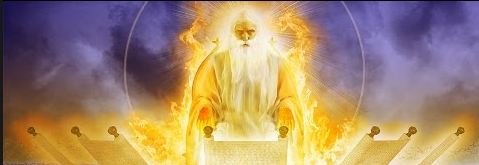 The Daniel 7 enthronement scene, a revelatory expansion of Ezekiel 1
The Daniel 7 enthronement scene, a revelatory expansion of Ezekiel 1
Jewish Falsification of First Century Judahite Beliefs
What's clear from all of this is the claim made by modern Judaism that the monotheistic Yehudim (Judahites) of the first century AD would never have countenanced the thought of a human being being divine, is untrue. History has conclusively disproved that notion and shown it to be a lie. The twin witnesses of Ezekiel 1 and Daniel 7, which Christians and Messianics commonly and rightly use to demonstrate Yah'shua's (Jesus') divinity, had already gripped the minds of some of these pre-Christian Yehudim (Judahites) and they could not let it go. Moreover, even if other groups didn't agree with them, they did not regard them as in any way being heretical because in the absence of authentic nevi'im (prophets) since the days of Malachi (at least until John the Baptist came) nobody knew any better.
Revelation About Messiah Came to the Messianic Community Gradually
Nevertheless we need to be careful not make wrong assumptions about the beliefs of either those Yehudim (Judahites) speculating about a divine Messiah or those of the very earliest Christians/Messianics: we should not conclude that those early beliefs were anywhere near as deep or as crystalised out as those found in the writings of John the Apostle for John's understandings came at least 30-40 years after Paul's own startling revelation, in the last decade of the first century. Revelation typically comes gradually to a community of believers and with it the deepest understanding of profound truths about who our Saviour was, and is. They did not understanding everything about Him all at once.
The Earliest Conclusions About Who Yah'shua Was
If you want to know what the first Christians/Messianics believed I don't think it went any further than this:
- 1. That they remained traditional monotheists like the Mosaic Yehudim (Judahites) before them, believing there was only one Elohim (God); and
- 2. That they were under obligation, under the impact of the Ruach haQodesh (Holy Spirit) in their lives, to worship Yah'shua (Jesus).
They did not abandon their core Tanakh (Old Testament) teachings about Elohim (God) not did they allow pagan ideas to slowly creep in surreptitiously, as is often falsely claimed. The evidence that they believed as I have just stated is solid and unambiguous. They were Messianic Israelites to the core.
Paul's Christian Monotheism
Paul and those early believers spoke of Yah'shua (Jesus) and the Elohim (God) of Israelite monotheism, as it were, in the same breath (see 1 Cor.8:1-6; Phil.2:5-11; Gal.4:1-7; Col.1:15-20, etc.). Paul never moved away from Israelite monotheism and into some sort of paganism as he is often accused of - he didn't add 'other gods' to create a sort of Christian 'pantheon', and he certainly never created the false dualism of Gnosticism in which the 'good God' would be opposed to the Old Testament 'bad god', or the Redeemer over against the Creator, as though Father and Son were at war with one another, though hearing some modern anti-Torah Christian teachings you'd think they were. Rather, Paul believed that "there is one Elohim (God), the Father, of whom are all things, and we for Him; and one Master Yah'shua the Messiah (Lord Jesus Christ), through whom are all things, and through whom we live" (1 Cor.8:6, NKJV).
 The heart and core of Old and New Testament theology is monotheism
The heart and core of Old and New Testament theology is monotheism
Creation and Redemption from Father and Son Together
This is actually a stunning adaptation of the Shema, "Hear O Israel, Yahweh our Elohim (God), Yahweh is Echad (One)" (Dt.6:4), in which Paul emphasises creation and redemption as equally originating in the Father and equally implemented through Yah'shua (Jesus), so that the Son (the Lesser Yahweh) is essentually the executive of the Father (the Greater Yahweh). This is what it means to worship Yah'shua (Jesus) within the framework of Israelite monotheism. How we develop that we must leave to another time though you will find plenty of articles that take this further in our Elohimhead or Godhead website.
False Messianic Trails
The next thing we must do is expose some false messianic trails. The first mistake that is commonly made amongst both believers and unbelievers alike is that the word 'mashiach' or 'messiah' carries with it the notion of divinity. In other words, it is wrongly assumed that if Yah'shua (Jesus) thought of Himself as mashiach (messiah) that it means He automatically would have thought of Himself as divine. We know this isn't the case because all the would-be, false messiahs of second Temple Judaism never thought of themselves in this way (as far as we know) and their followers never attributed divinity to them. The only exception was Bar-Kochba who committed a double blasphemy.
Does "Son of Elohim" Imply Divinity?
The second false assumption that is made is that the phrase "son of Elohim (God)" implied the same thing in this period of time. It didn't. Rather, it functioned as a messianic title only. It carried no overtones of 'divinity' that later Christian theology ascribed to it. Now don't get me wrong - even though the Yehudim (Judahites) did not see in the phrase notions of divinity the New Testament absolutely does, as I pointed out in those four important passages earlier [12]. My only point is that when Yah'shua (Jesus) used the terms 'messiah' or 'son of Elohim (God)' His contemporaries would not have viewed them as a claim to divinity. If they had, they would have tried stoning Him many more times.
Does Resurrection Establish Divinity?
The third and last false trail is the resurrection itself which people assume is proof of divinity. The error chiefly comes from a faulty reading of Romans 1:4 which says that He was "declared to be the Son of Elohim (God) with power according to the Spirit of holiness, by the resurrection from the dead" (Rom.1:4, NKJV). What that phrase meant was that Yah'shua (Jesus) was publically designated as Mashiach (Messiah) through that event - the resurrection. Nothing in the Judahite (Jewish) expectation of resurrection indicates that anyone would conclude that, faced with someone alive again with a new sort of life following death, would conclude that he was in any sense divine.
Effects of the Resurrection on the Belief System of the First Believers
Quite the opposite in fact because 'resurrection' was what was supposed to happen to all the dead, or at least in most theological circles, the righteous dead at any rate, and there was never any suggestion historically that this would simultaneously constitute divinisation. If the reverse had been true, then all those people whoe rose from the dead in Jerusalem would have been regarded as gods...which they were not (Mt.27:52-53), being as they were still mortal [2]. What the resurrection did, initially, was simply to awaken the dejected talmidim (disciples) to the truth that Yah'shua (Jesus) was in fact the Messiah. And from this they concluded both that He was, indeed, Master (Lord) of the world, as the Messiah was always supposed to be, and that His death, rather than being a shameful defeat, was, in fact, a strange but glorious victory over all the forces of evil. That is all they understood at first.
Understanding Yah'shua as the Embodiment of Yahweh-Elohim
But from this combination of beliefs they then went on into the unknown, under the impress of the Ruach haQodesh (Holy Spirit), to declare that since Yah'shua (jesus) had thus accomplished the mighty saving act, that no other claimant messiah had managed, that that could only be the personal work of Yahweh Himself, the Elohim (God) of the first Exodus. And from that they came to understand that Yah'shua (Jesus) was somehow to be identified as the personal manifestation, the embodiment, of the one true Elohim (God) of Israel. The resurrection was essential for this train of thought to be begun, but it did not in and of itself 'mean' that Yah'shua (Jesus) was divine.
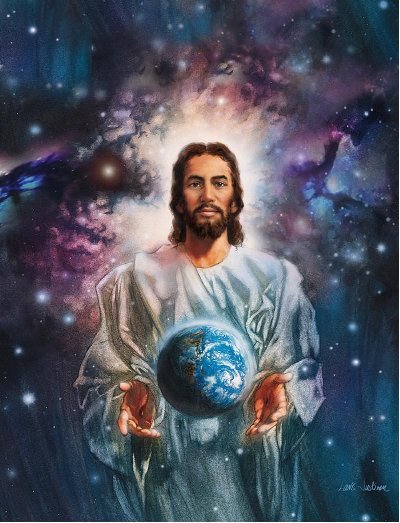 Yah'shua the Messiah is the embodiment of the Creator Yahweh-Elohim
Yah'shua the Messiah is the embodiment of the Creator Yahweh-Elohim
Early Chinese Christian Theological Development
If you think about it, someone reading the Bible for the first time not knowing anything about the historic Christian credes or what orthodox Christians believed would likely go through a similar process, gradually coming to the truth. That's one reason I am fascinated by the story of the growth of Christianity in China. Before Western doctrines started permiating that communistic land, most of the new Chinese believers, without contact with the West or with the few surviving pre-communist churches, must have gone through a similar thinking process [3], though unfortunately they were influenced by modern Western Bible translations which were used to translate their own Chinese Bibles, in much the same way the Latin Vulgate was used to make some of the earliest translations to other languages in Europe before Protestant versions started appearing. They have also been imacted by all the charism,atic and other cults imported from the West. If we're going to connect with the earliest Christians/Messianics we have to wipe clean all the theological developments since the first century from our minds, and we're speaking 1,900 years of development during which new languages appeared (like English) and old ones disappeared (like classical Hebrew) so this is no mean feat. It is not an easy thing to do that. That's why we must do history and do it well.
David Wants to Build Yahweh a Proper House to Live In
The resurrection, which established Yah'shua (Jesus) as Mashiach or Messiah, did, however, link to one particular Tanakh Old Testament) prophecy very early on, a prophecy that was very important within some strands of second-Temple Judaism. It became very important in early Christianity. I wonder if you can guess what it is? It's a very well-known, classic passage, where David enters into a dialogue with Yahweh. David intends to build Yahweh a House, so that instead of the wandering tent or Tabernacle left over from the wilderness period, Yahweh can live in a proper, fixed House. If I might remind you of that passage:
"Now it came to pass when the king (David) was dwelling in his house, and Yahweh had given him rest from all his enemies all around, that the king said to Nathan the navi (prophet), 'See now, I dwell in a house of cedar, but the ark (covenant-box) of Elohim (God) dwells inside tent curtains.' Then Nathan said to the king, 'Go, do all that is in your heart, for Yahweh is with you'" (2 Sam.7:1-3, NKJV).
The Son of David Will Be Adopted by Yahweh!
Then follows something very interesting, because Yahweh transform this little narrative of temple-building into something else! What do I mean by that? Yahweh will build David a house too, only it won't be a house of fine timber, stone and paneling like the one he already has, but rather He will build him another kind of 'house', in the sense of a family. And even more specifically - and here's the incredible prophetic element that generations couldn't understand until the Messiah came to the earth the first time - more specifically, Yahweh will give David a son who will be king after him, and this son will build a Temple for Yahweh to live in. What is more - and this is the incredible part because of its prophetic nature - Yahweh will adopt him as His own son! (2 Sam.7:11-14; Ps.2:7; 89:26-27; DSS 4Q174).
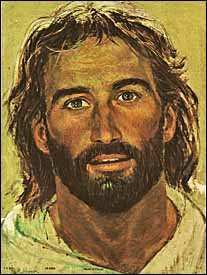 David is told he will have son
David is told he will have son
whom Yahweh will adopt as His own
Resurrection of the Son of David & the Greek Septuagint
The crucial verse for this important point is 2 Samuel 7:12-14 which reads:
"I will set (raise) up your (David's) seed after you, who will come from your body, and I will establish his kingdom. He shall build a house for My name, and I will establish the throne of his kingdom forever. I will be his Father, and he shall be My son" (2 Sam.7:12-14, NKJV).
The Hebrew for "I will raise up" has no particular connotations of 'resurrection' at the supposed time of writing. But when the Tanakh (Old Testament) was translated into Greek some 200-300 years before the time of Yah'shua (Jesus), the verse was rendered kai anastéso to sperma sou, meaning, "I will resurrect your seed". Since it was roughly about this time that Judahite beliefs in the resurrection of the dead had started to blossom, it is reasonable to suppose that the translators, and certainly those Judahites who read 2 Samuel in this Septuagint version, saw the passage as a prophecy that Elohim (God) would raise David's true and ultimate "seed" or "offspring" from the dead and that this resurrected "seed" would, in some new sense, be Elohim's (God's) own Son.
David's Son, Yahweh's Resurrected Son
But we still haven't arrived all the way to the key point. What we have to do is reflect, with early Christian hindsight, on the significance of Yahweh's response to David. David was offering to do what? Build a timber-and-stone house as a dwelling place for Yahweh. Yahweh's response was that this was secondary - what mattered was that He, Yahweh, would build a "house" for David consisting ultimately of David's son who would be Yahweh's Son. And, as the Septuagint translation into Greek suggested 200-300 years before the historical event, this son would be known by being raised from the dead!
Stone Temple, Human Temple
What I'm asking you to do is to read this story with early Christian eyes, not with 21st century eyes, not with Protestant eyes, not with Catholic or Eastern Orthodox eyes, but with first century eyes. And what do we find? That the Temple, for all its huge importance and centrality within Judaism, was, after all, a signpost to the reality, and the reality was the resurrected Son of Elohim (God). Elohim (God), in other words, is not ultimately to dwell in a human-built Temple, a timber-and-stone house. Yahweh-Elohim will indeed dwell with His people, allowing His glory and mystery to "tabernacle" in their midst, but the most appropriate way for Him to do this will not be a building but through a human being. And the human being in question will be the Messiah, marked out by resurrection.
Mystery of the Temple Revealed
That is why any proposed 21st century Temple in Jerusalem that carnal religious men and women want to build, is entirely redundant. It's a retrograde - a backward - step as far as revealing Yahweh's ultimate purpose is concerned. It's why the Jerusalem Temple became redundant and why its destruction by the Romans was necessary, an act of grace, and not a national tragedy. It was a tragedy only to those who had their eyes on a wood-and-stone building instead of the Resurrected Christ, or refused to see the emet (truth). Yes, the original Temple of Solomon was where heaven and earth interlocked for an æon - for a while - where the living Elohim (God) had promised to be present with His people, but even that incredible reality was but a prefigurement of the final place where heaven and earth were always and permanently meant to intersect, and that was, and is, in the very Person of Yah'shua the Messiah, Jesus Christ, the divine Son of Elohim (God).
The Importance of Sukkot
Today is the seventh and last day of Sukkot, the Feast of Tabernacles. We have been sitting under one such sukkah or 'tabernacle' which originally depicted the temporary booths erected by the Israelites in their wandering in the Sinai wilderness. But it actually means much more than that. It also represents our physical bodies, our families, our clans, our Israelite Tribes, our Nation of Messianic Israel, our Planet Earth, our Galaxy, our Universe - the whole Creation. But most importantly of all it represents the resurrected body of our Master, Yah'shua the Messiah (Jesus Christ), and to a key event two thousand years ago that we call 'the Cross'. This is the centre and focus of everything we stand for. It is the heart of our faith and of our very existance. The Feast of Tabernacles reminds us of that. We started with our simple homes at Pesach (Passover) with the blood of the lamb applied to their lintels (doorposts) and we have arrived, through seven feasts telling a prophetic story, to the Great Consummation - the Marriage Feast of the Lamb, to the reality and truth of Resurrected One, who purchased a dear and precious salvation for us by the Cross, so that Heaven and Earth could meet where the faithful are, and one day merge in resurrection for the Bride.
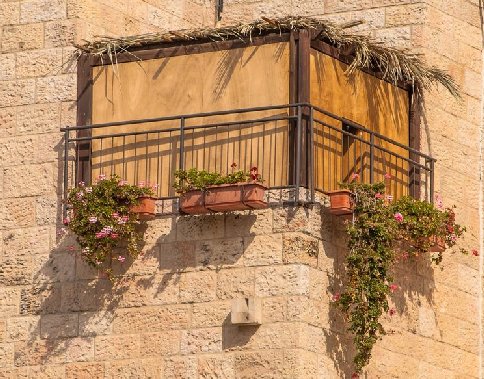 The booth we live under at Sukkot finds its fullest
The booth we live under at Sukkot finds its fullest
meaning as the body of the resurrected Messiah, Yah'shua
Conclusion
Tomorrow I invite you all back to the Last Great Day, the mysterious festival known in Hebrew as Shemini Atseret which will bring this annual cycle of divine modeim, appointments or festivals to and end. May the Master (Lord) of the Resurrection, who tabernacled among us through the divine act of incarnation, who was crucified, buried and rose from the dead on the third day in an immortal body, assuring us of eternal life and physical resurrection in that Great Day to come, bless you all. Come to Him, trust Him, and become part of the Great Tabernacle of the Redeemed. Amen.
Continued in Part 3 (Shemini Atseret)
Endnotes
[1] 1 Corinthians 8:1-6; Philippians 2:5-11; Galatians 4:1-7; Colossians 1:15-20
[2] These were not technically 'resurrected', which would have made them immortal, but raised to life again as Lazarus had been (Jn.11-12), to then die as mortals again later. There is considerable confusion over the difference between resurrection and thaumaturgy (see OB 147:3-7) amongst Christians that has, las, led to a number of false teachings including annihilationism which is esposed by Jehovah's Witnesses and others.
[3] Unfortunately the Chinese churches have also birthed some unique heresies of their own which are starting to impact the apostate West ever seeking new and titilating doctrines to consume upon its lusts. This is in partly the fauly of poor translations but is also the result of cultural influences distorting the truth, a reason we must know about, and understand, the original cultural life of our biblical ancestors.
Further Reading
[1] The Origins of Ashkenaz, Ashkenazic Jews, and Yiddish (Rajnit Das, Paul Wexler, Mehdi Pirzoonia & Eran Elhaik)
Acknowledgements
[1] N.T.Wright, The Challenge of Jesus: Rediscovering Who Jesus Was and Is (IVP Academic, Downer's Grove, Illinois: 1999)
[2] This proved not to be possible

 V299
V299
|


